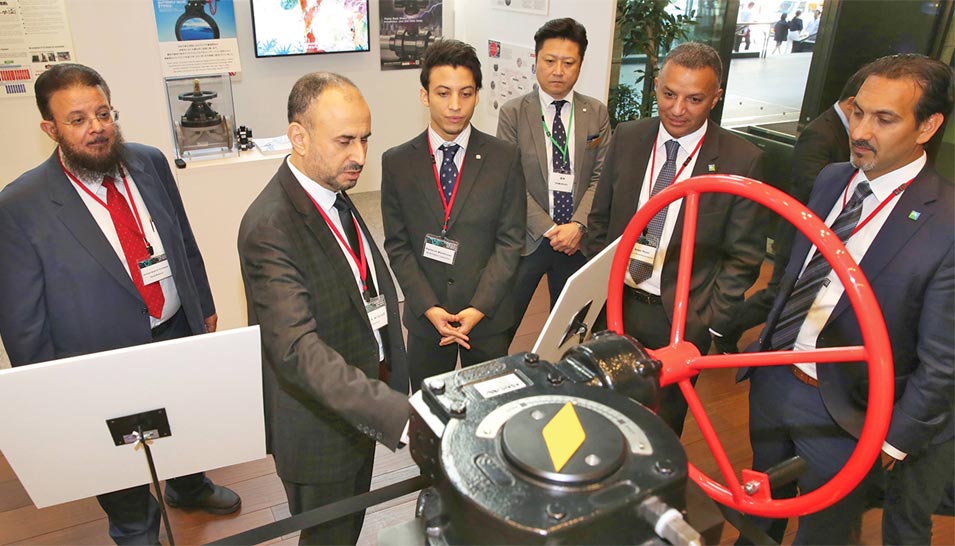
Jointly organized by Saudi Aramco and Aramco Asia-Japan, the event was attended by leading Japanese companies, research centers, key players in nonmetallic sectors, and hosted speaking guests from SABIC and SAGIA.
Theme of first non-metallic symposium “Endless Possibilities by Chemical Integration”, serving as a platform for industry majors to exchange ideas on future nonmetallic business opportunities and showcase their development work.
In his keynote address, Saudi Aramco's senior vice president of Technical Services Ahmad A. Al-Sa’adi said Aramco was actively pursuing nonmetallics to improve the efficiency and performance of its own operations, and to move the company beyond traditional markets. Outlining four key sectors where nonmetallic products can add value — oil and gas, automotive, construction, and packaging — Al Sa’adi said: “The opportunities are huge, and this is why Saudi Aramco has set a goal of playing a leading role in accelerating the deployment of the nonmetallic materials business globally.”
Nonmetallic Flow Line Network
Twenty years ago, Saudi Aramco commenced a nonmetallic road map with a goal of reducing the annual cost of corrosion by 10%. “As we all know, corrosion can affect the safety, integrity, and reliability of operating facilities,” Al Sa’adi said. “And the cost of corrosion is huge. “Some of our flow line network — mainly built from carbon steel — has been susceptible to corrosion damage because of exposure to common oil field fluids, H2S, CO2, and even bacteria,” he added. “But we have found that Reinforced Thermoplastic Pipe (RTP) used in flow line applications is quite successful in controlling corrosion.”
Growth Sectors
In the automotive sector, Al Sa’adi said there was tremendous growth potential for polymers, which is the most prevalent material in vehicles after metals. “The current automotive plastic market is expected to double between 2017 and 2025,” he said. “Disruptions in the automotive business, such as the rise of lightweight electric vehicles and integrated mobility providers, will favor more utilization of nonmetallic materials as seen by the number of emerging nonmetallic developments to replace metallic components.”
With regard to building and construction, Al Sa’adi said Saudi Aramco was already making use of polymer in construction.
“We recently implemented the corrosion-resistant fiber reinforced polymer rebar in the foundations of a 400-meter long perimeter in one of our construction projects,” he noted. “In a parallel effort, we are undertaking a major initiative to use fiber reinforced polymer rebar in a 21-kilometer long storm water drainage channel in our Jazan Economic City project. Once built, it will be the largest project in the world ever to be constructed using fiber reinforced polymer rebar.”.
As for packaging, Al Sa’adi said, plastic in industrial and transport packaging markets has a large potential for accelerated adoption.
Crude Oil to Chemicals
Saudi Aramco’s long-term strategy is to expand the company’s downstream activities by unlocking growth opportunities from nonmetallic materials, thereby extracting maximum value across the hydrocarbon value chain.
Earlier this year, Saudi Aramco opened the Nonmetallic Innovation Center on the Welding Institute Campus outside Cambridge University, U.K., to conduct research and development of nonmetallic technologies.
With 30% of oil’s increase in demand expected to come from petrochemicals by 2030, and a further 50% petrochemical growth for the period 2030-50, the company is planning to shift 2 million barrels per day toward the development of integrated refining and chemicals production.
Through developments such as nonmetallic materials, Saudi Aramco is looking to establish itself as a leading petrochemical and energy enterprise, and in so doing, reduce its carbon footprint by minimizing production life cycles and localizing manufacture.